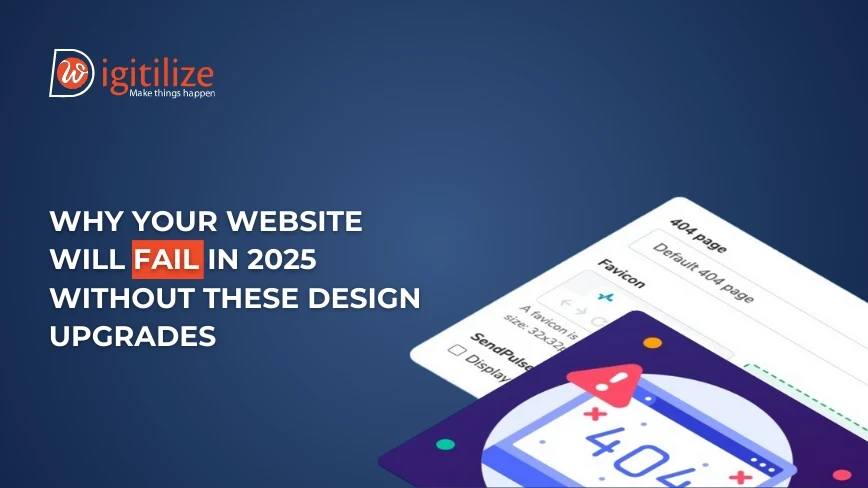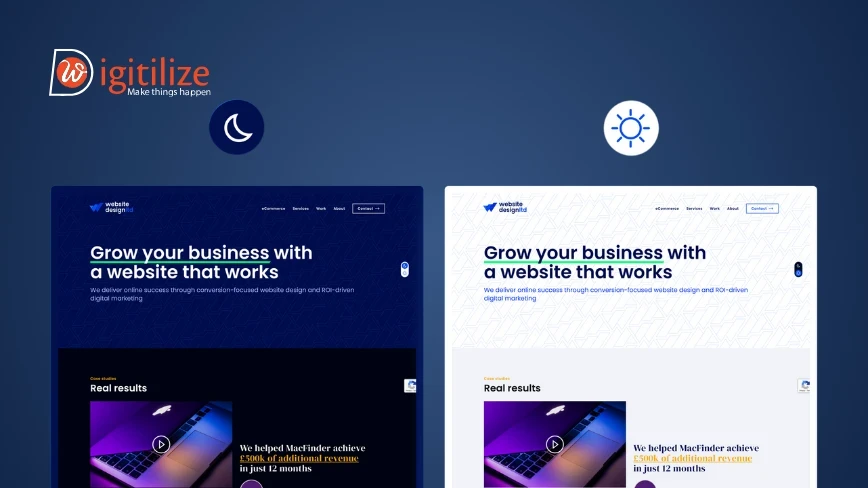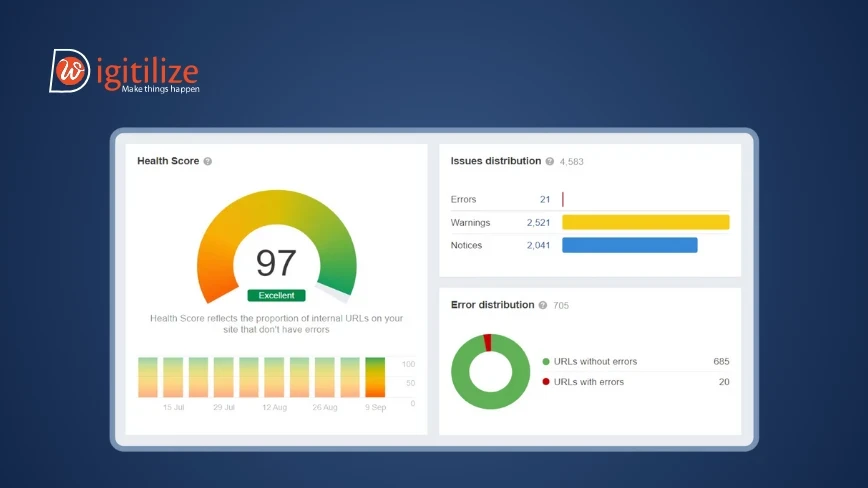Why Your Website Will Fail in 2025 Without These Design Upgrades

If your website still looks like it’s from 2016 (or even 2020), it’s time for a serious upgrade. In this blog, we’ll break down the essential website design upgrades you need in 2025 to stay ahead. Great website design services today go beyond just good looks—they focus on speed, trust, and user experience. Miss out on these, and your potential customers will head straight to your competitors.
Top things that you should not avoid about your website in 2025
- Mobile-First Design Is the Bare Minimum
Think about how your content stacks on small screens. Is the navigation intuitive? Can someone buy your product or book a service in under three taps? If not, you’re probably leaking conversions. Also, Google now prioritises mobile-first indexing, meaning if your mobile version sucks, your search rankings will too.
- Slow Load Times Will Kill Your Conversions
Design plays a big part in speed. Oversized images, heavy animations, and unoptimized code are silent killers. Clean, lean designs aren’t just a trend—they’re a necessity. Tools like PageSpeed Insights or GTmetrix can show you where your site is lagging. But knowing is only half the battle. You need to design with speed in mind from the very beginning.
- Static Sites Are Out—Interactivity Wins Attention
Simple touches like hover effects, animated buttons, or scroll-triggered transitions can make a site feel dynamic. Micro interactions (like a button pulsing slightly when hovered) improve user engagement subtly but effectively. Interactive features—like quizzes, sliders, or even embedded videos—don’t just look good, they keep people on your page longer.
- Your Design Needs to Think About Accessibility
What does that mean in design terms? Use readable fonts, high-contrast colors, and proper heading hierarchies. Make sure your site works with screen readers and can be navigated via keyboard. These changes benefit everyone, not just those with disabilities. Inclusive design is just good design.
- Dark Mode Is No Longer Optional
 Dark mode has gone from “nice-to-have” to “why-don’t-you-have-it?” in 2025. Users expect control over how they view your content. Offering a light/dark toggle isn’t just trendy—it shows you care about their comfort.
Dark mode has gone from “nice-to-have” to “why-don’t-you-have-it?” in 2025. Users expect control over how they view your content. Offering a light/dark toggle isn’t just trendy—it shows you care about their comfort.From a design standpoint, implementing dark mode means rethinking your color palette, ensuring readability, and testing for visual clarity. But the payoff? Improved user experience and longer browsing sessions.
- Personalisation Is the New Homepage Strategy
This could mean changing the homepage banner based on user location or showing different products to returning customers. Personalisation helps visitors feel seen, and in an age of digital overload, that’s powerful. Just remember to keep it subtle—no one wants to feel like they’re being stalked.
- Trust Needs to Be Built Into Your Design
Include visible trust elements: security badges, clear privacy policies, testimonials, and social proof. Don’t bury them at the bottom—put them where users are making decisions. Clean layouts, consistent branding, and easy-to-find contact info also reinforce trust. A confusing or chaotic interface will send users running.
- Outdated Visuals Will Cost You Sales
Modern visuals are crisp, flat (not flat as in boring, but flat as in focused), and intentional. Think bold fonts, subtle gradients, clean icons, and meaningful white space. And yes, that means ditching outdated stock photos and investing in real, on-brand imagery.
- Minimalism Only Works When It’s Strategic
Avoid information overload. Prioritise what your users need to know right now. Group content logically. Use layout and spacing to guide the eye. A well-executed minimalist design feels effortless, but behind it is a lot of strategic thinking.
- Fonts and Typography Matter More Than You Think
In 2025, legibility is key. Stick to two or three typefaces max. Use proper line heights and font sizes across devices. Make sure the body text is easy on the eyes. Fancy fonts might look cool, but if people can’t read your content, they won’t stick around.
- Your Visual Storytelling Needs an Upgrade
Guide the user from problem to solution, from confusion to clarity. Use hero sections, sections that scroll into scenes, and visual metaphors. Think of your homepage as a movie trailer—it should hook, explain, and entice in seconds.
- Core Web Vitals Are the New Design Standards
- Conversion-Focused Design Is Non-Negotiable
Calls to action need to be clear, well-placed, and irresistible. Page layout should remove friction. Design your user journey with intention, making it easy for people to do what you want them to do. If they’re confused, they’ll bounce.
- Regular Design Audits Will Save Your Site

Design is not a “set it and forget it” game. Trends change, tech evolves, and user behavior shifts. A site that worked two years ago might be hurting you now. In 2025, smart businesses are doing regular UX audits—every 6 to 12 months. These don’t have to be expensive or complex. Just reviewing site data, watching session replays, and asking users for feedback can reveal design flaws you’re blind to. Then iterate. Small updates over time beat massive redesigns every five years.
- Excuses Are the Fastest Path to Obsolescence
website design services is never just about looking good. It’s about being functional, trustworthy, and aligned with your audience’s expectations. In 2025, that bar is high—and rising.
Final thoughts
If your website doesn’t evolve, it will die. Lower rankings. Fewer conversions. Lost trust. Missed opportunities.But the good news? You don’t have to do a full redesign overnight. Start with the areas we’ve outlined. Focus on speed, accessibility, interactivity, and modern UX. Get feedback. Test changes. And most importantly, stay adaptable.
Your website is your digital storefront. In 2025, it will need to work harder than ever before. So, make it count. We specialise in turning outdated websites into conversion machines. From UX audits to full redesigns, we’re here to help you stay ahead of the curve. Book for website design services now.

